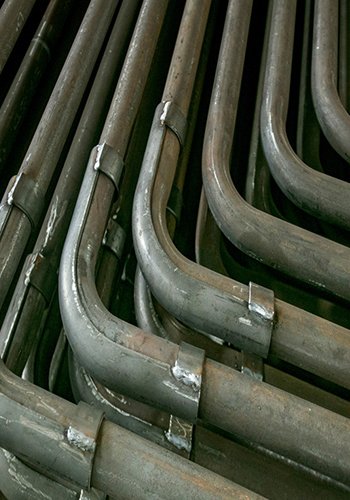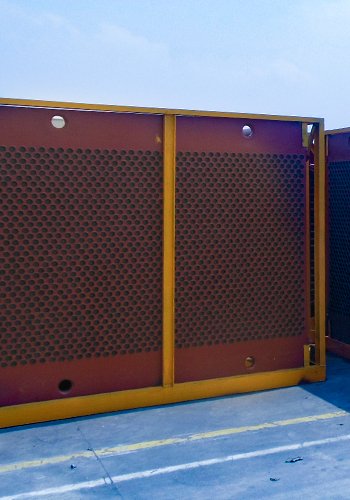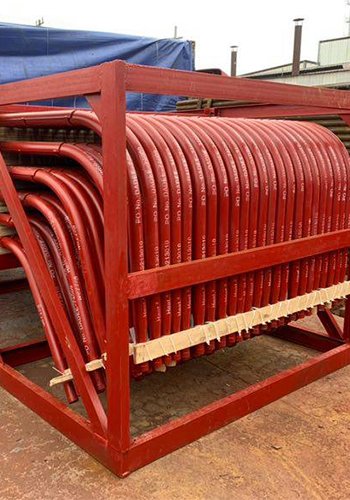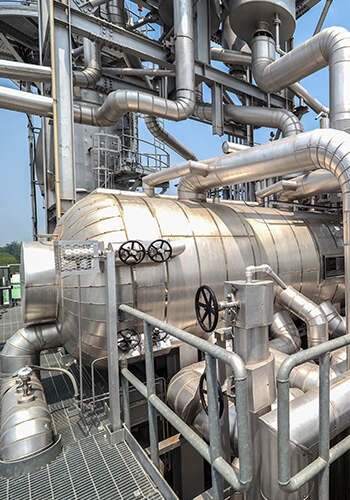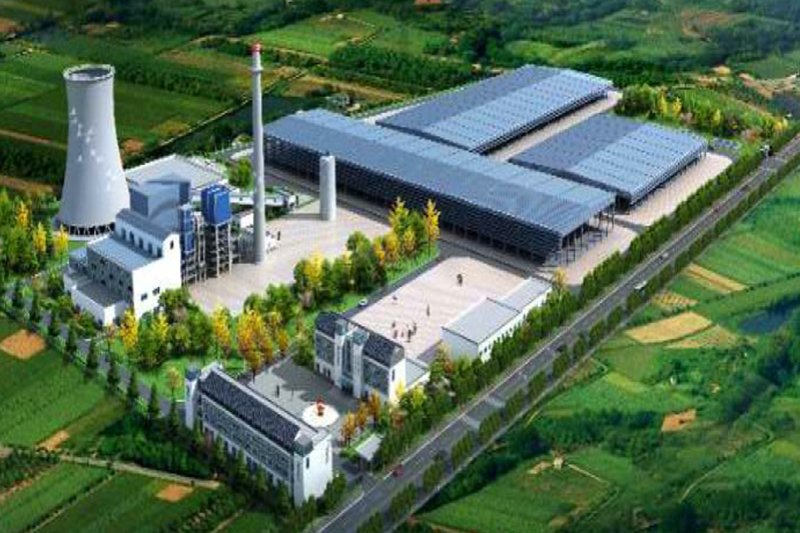Waste to energy boilers have emerged as a prominent renewable energy technology garnering significant interest in Europe. This document aims to conduct a thorough examination of the viability of waste to energy boilers within the European context. A particular emphasis will be placed on scrutinizing flue gas emissions and delving into the regulatory obligations associated with the incineration process.
1. Historical Overview
In the European Union, encompassing the United Kingdom, the establishment of incineration plants predominantly occurred between 1975 and 2005. By 2013, there were approximately 469 incineration plants, boasting an incineration capacity of around 2.07×105t-d-1. However, growth in this sector has been relatively sluggish since [1, 8]. To address the escalating concerns surrounding flue gas pollution and environmental hazards associated with incineration plants, the European Union (EU) and its member states initiated a refinement of regulations pertaining to flue gas emissions. This regulatory evolution gained momentum when the incineration scale reached approximately one-third of its current magnitude.
In 1988, Austria took a pioneering step by proposing the initial limit value of 0.1 ng TEQ•m-3, specifically addressing the toxic equivalence of dioxins in flue gas [9]. The following year, in 1989, the European Union (EC) introduced the “Guidelines for New Domestic Waste Incineration Plants” (GWIP) [10]. Concurrently, the “Air Pollution Prevention and Control Standards for Newly Built Domestic Waste Incineration Plants” (Directive 89/369/EEC) was issued, stipulating crucial process control requirements. These requirements included ensuring that flue gas remains in the space above the incinerator temperature of 850 ℃ for a minimum of 2 seconds and maintaining the flue gas oxygen content (volume fraction of oxygen) at not less than 6%, among other specifications. Moreover, distinct process control requirements were outlined for incineration scales of 1 t•h-1 or less, 1~3 t•h-1 , and 3 t•h-1 or above. Incinerators falling within these categories were subjected to differentiated limit values.

Notably, by the end of the 20th century, influenced by the 1996 Directive on the Assessment and Management of Ambient Air Quality (Directive 96/62/EC) and other regulatory frameworks, the European Union introduced the renowned “EU Standard on Waste Incineration” through the “Directive on Incineration of Domestic Waste” (Directive 2000/76/EC) [13]. A decade later, this standard was succeeded by the EU Industrial Emissions Directive (Directive 2010/75/EU) [14]. It is essential to highlight that despite this transition, the flue gas emission limits for waste incineration remained consistent and did not undergo alterations.
2. Present Regulatory Framework
In a comparative analysis with the Chinese standard, the current EU Industrial Emissions Directive (Directive 2010/75/EU) [14] reveals both similarities and distinctions. Noteworthy points include:
- Uniform Basic Conditions: Both standards share common foundational conditions, such as a flue gas benchmark oxygen content of 11%, and reference standard working conditions at 0 ℃ and 1 atmospheric pressure.
- Expanded Supervision of Conventional Pollutants: The EU standard surpasses its Chinese counterpart by encompassing a broader range of conventional pollutants in flue gas under its supervision and regulation, notably including additional indicators like HF and TOC.
- Consistency in Compliance Data: While the data for compliance evaluation of conventional pollutants in the EU standard remains unchanged, the emission limits for waste incineration have experienced no alterations. The EU standard employs daily average, 0.5 h average, and 10 min average (exclusive to CO) for compliance evaluation. The daily average in the EU standard represents the arithmetic mean of all 0.5 h averages in a natural day, allowing up to 5 invalid 0.5 h averages. In contrast, the Chinese standard calculates the daily average as the arithmetic mean of all 1 h averages in a natural day, permitting a maximum of 4 invalid 1 h averages [15].
- Diverse Compliance Evaluation Approaches: The EU standard introduces two distinct pathways for compliance evaluation. One mandates that 100% of the automatic monitoring 0.5 h average values during the evaluation period meet the A limit value, while the other stipulates that more than 97% of the automatic monitoring 0.5 h average values suffice to meet the more stringent B limit value. In contrast, China’s compliance evaluation exclusively adopts the former approach.
- Stringent Size-based Limits: The EU standard establishes a stringent size-based boundary at 6 t-h-1, imposing rigorous limits for evaluating incinerators of varying sizes. Furthermore, the EU standard provides differentiated limit values for NOx emissions from incinerators based on a cutoff of 6 t-h-1.
3. Regulatory Instruments
The EU Industrial Emissions Directive (Directive 2010/75/EU) mandates incineration plants to utilize automated monitoring for demonstrating compliance with seven conventional pollutants. However, certain exemptions are granted:
- Acid Gases Monitoring Exemption: No automated monitoring of acid gases (HCl, HF, and SO2) is required if it can be demonstrated that these acid gases consistently meet the prescribed standards.
- NOx Emissions Monitoring Exemption: Incineration plants with a size below 144 t-d-1 are not obligated to conduct automated monitoring of flue gas NOx emissions if it can be proven that these emissions remain below the stipulated limits.
- Size-based NOx Emissions Monitoring Differentiation: The EU standard establishes differentiated limits for incinerators of varying sizes, with a cutoff at 6 t-h-1. If it can be demonstrated that flue gas NOx emissions are stabilized and below the limits, automatic NOx monitoring becomes avoidable [14].
In the European Union, automatic monitoring of particulate matter typically relies on light transmission/scattering methods. Additionally, automatic monitoring of gaseous pollutants can employ non-dispersive infrared spectroscopy, Fourier transform infrared spectroscopy, non-dispersive ultraviolet spectroscopy, and tunable diode laser absorption spectroscopy [16]. Comparative monitoring, conducted at least once annually, is a standard practice.
The “Recognition of automatic monitoring systems for pollutants from stationary sources: performance requirements and test procedures” (EN 15267-3) tightens the accuracy requirements of the automatic monitoring system by 25% compared to the range of deviation specified in the Industrial Emissions Directive [17]. China’s automatic flue gas monitoring method for incineration plants closely aligns with the EU, necessitating four comparative monitoring sessions per year without exemptions for monitoring conditions [18].
In terms of flue gas characteristic pollutants, the European Union does not impose mandatory requirements for automatic monitoring. For instance:
- Heavy Metals Monitoring: Except for Hg, various methods, including atomic absorption spectroscopy and differential absorption spectroscopy, can be used for automatic monitoring. Manual monitoring remains a prevalent approach.
- Dioxins Monitoring: Manual monitoring is permitted, involving a lengthy process of sampling and monitoring. Both the EU’s EN 1948 series of standards and China’s HJ 77.2 standards employ high-resolution chromatography-mass spectrometry analytical methods, requiring sample collection, extraction, purification, and instrumental analysis over a 2-hour period for a single sample. To address limitations in covering fluctuating waste incineration conditions, the EU has explored long-cycle sampling since 1997. This method extends sampling time from a few hours to 2-4 weeks, with subsequent analysis using high-resolution chromatography and mass spectrometry (HRCMS). The EU has formulated the Technical Specification for Long-Cycle Sampling of Dioxins and PCBs (CEN/TS 1948-5:2015) [19], with global applications, including in countries like France, Belgium, and cities such as Ningbo and Taipei in China. However, the permissible monitoring error for long-cycle sampling is substantial, allowing a maximum error of 100% when the toxic equivalent concentration of the sample is 0.02 ng TEQ-Nm-3, posing challenges in practical regulatory applications.
4. Conclusive Remarks on Waste to Energy Boilers Feasibility
In Europe, the viability of waste to energy boilers faces formidable challenges stemming from stringent regulatory and environmental prerequisites. Despite minor divergences in prevailing standards, Europe has successfully instituted a relatively robust regulatory framework to ensure effective control of flue gas emissions from waste incineration processes. This regulatory paradigm encompasses not only monitoring requisites for conventional pollutants but also emphasizes characteristic pollutants like hydrofluoric acid and total organic carbon. Such an approach enables Europe to consistently drive advancements in waste to energy boiler technology while upholding elevated environmental protection standards.
As environmental regulations in Europe continue to evolve, the future of waste to energy boilers appears poised for broader development. Stringent environmental standards will propel the industry to enhance technological sophistication, steering waste to energy boilers towards cleaner and more efficient trajectories. Furthermore, escalating environmental regulations will impose heightened technical demands on manufacturers and operators of waste to energy boilers, compelling them to perpetuate innovation and adopt advanced purification technologies and emission monitoring methodologies.
However, the journey towards sustainable development of waste to energy boilers in Europe extends beyond technical challenges. More stringent regulatory mandates for flue gas emissions will impact investment and operational expenditures, necessitating companies to innovate while maintaining economic viability. Consequently, industry stakeholders must prioritize cost control and resource efficiency while concurrently advancing technology to ensure the enduring viability and profitability of waste to energy boiler projects.
In summary, despite the regulatory and environmental constraints hampering the progress of waste to energy boilers in Europe, the industry is anticipated to emerge as a pivotal component of the European renewable energy sector. This transformation will be propelled by ongoing technological upgrades, innovative environmentally conscious solutions, and dedicated efforts to enhance economic feasibility.
References
[1] LU J W, ZHANG S, HAI J, et al. Status and perspectives of municipal solid waste incineration in China: A comparison with developed regions[J]. Waste Management, 2017, 69(C): 170-186.
[2] Bureau of Eco-Environmental Law Enforcement, Ministry of Ecology and Environment, South China Institute of Environmental Science, Ministry of Ecology and Environment. Interpretation of the New Policy on Automatic Monitoring Data Management of Domestic Waste Incineration Power Plants [M]. Beijing: China Environmental Publishing Group, 2020.
[3] Yu Tianhao. How can the waste incineration power generation industry make a “magnificent turn”? [N]. China Environment News, 2021-03-15(1).
[4] Chen Yu. China’s waste incineration power generation industry special rectification achieved remarkable results, automatic monitoring data to the credit [N]. Economic Daily News, 2021-01-04.
[5] Wang Wei, Guo Jianbing. Waste incineration power generation industry special rectification action effectiveness series report (5) Waste incineration power generation – China’s solution for the world to learn from[J]. Environmental Economics, 2023(1): 52-55.
[6] Shen Huaxin, Cheng Jiang, Xie Yingshi, et al. Impact of food waste exclusion ratio on NOx emission from domestic waste incineration plants under the context of waste separation[J]. Journal of Environmental Engineering, 2021, 15(12): 3957-3966.
[7] National Development and Reform Commission, Ministry of Housing and Urban-Rural Development, Ministry of Ecology and Environment, et al. Guiding Opinions of National Development and Reform Commission and Other Departments on Strengthening the Construction of Domestic Waste Incineration and Treatment Facilities in County-Level Areas (Development, Reform and Environmental Resources [2022] No. 1746) [EB/OL]. 2022. https://www.gov.cn/zhengce/zhengceku/2022-11/content_5729354.htm
[8] ISWA. Waste-to-energy state-of-the-art-report statistics, 6th edition with revision[M]. International Solid Waste Association, 2013.
[9] LICATA A, HARTENSTEIN H U, TERRACCIANO L. Comparison of US EPA and European emission standards for combustion and incineration technologies: Proceedings of the 5th annual North American waste-to-energy conference and exhibition[C]. U. S. : Research Triangle Park, 1997.
[10] EUROPEAN COMMUNITIES. Council Directive 89/369/EEC of 8 June 1989 on the prevention of air pollution from new municipal waste incineration
plants[S]. 1989.
[11] EUROPEAN COMMUNITIES. Proposal for a Council Directive on the incineration of hazardous waste (92/C130/01): Official Journal of the European Communities: [S]. 1992.
[12] EUROPEAN UNION. COUNCIL DIRECTIVE 96/61/EC of 24 September 1996 concerning integrated pollution prevention and control: [S]. 1996.
[13] EUROPEAN UNION. Directive 2000/76/EC of the European Parliament and of the Council of 4 December 2000 on the incineration of waste[S]. 2000.
[14] EUROPEAN UNION. Directive 2010/75/EU of the European Parliament and of the Council of 24 November 2010 on industrial emissions (integrated
pollution prevention and control)[S]. 2010.
[15] Ministry of Environmental Protection. Standard for Data Transmission of Pollutant Online Monitoring (Surveillance) System (HJ 212-2017) [S]. 2017.
[16] BRINKMANN T, BOTH R, SCALET B M, et al. JRC Reference report on monitoring of emissions to air and water from IED installations[R]. European Commission’s Joint Research Centre, 2018.
[17] GEERTINGER A, BLINKSBJERG P, SPOELSTRA H, et al. Quality assurance of automated measuring systems –background for a new european standard: Conference on Emission Monitoring – CEM 2001[C]. Arnhem, Netherlands. 2001.
[18] General Office of the Ministry of Ecology and Environment . Notice on Strengthening Automatic Monitoring and Supervision and Enforcement of Domestic Waste Incineration Power Plants (环办执法[2019]64号) [Z]. 2019
[19] EUROPEAN COMMITTEE FOR STANDARDIZATION. Stationary source emissions – Determination of the mass concentration of PCDDs/PCDFs and dioxin-like PCBs – Part 5: Long-term sampling of PCDDs/PCDFs and PCBs[S]. 2015.
[20] REINMANN J. Long-Term Sampling–A Method for Continuous Emission Monitoring of Dioxins/Furans and Mercury[R]. Environnement S. A. , 201
